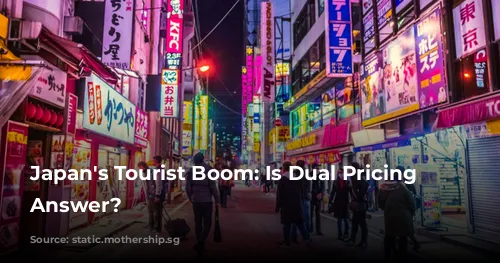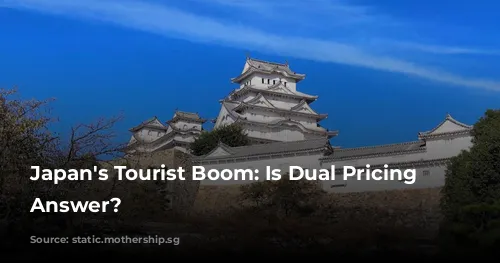A surge in visitors to Japan, fueled by a weakening yen, has sparked a debate about whether businesses should charge foreign tourists more. This isn’t just a hypothetical discussion; some restaurants and attractions are already putting dual pricing systems into practice, creating a divide between domestic and foreign visitors.
The argument for dual pricing hinges on rising costs, particularly labor, which businesses say are driven by the need to hire English-speaking staff and train them to cater to foreign clientele.
One restaurant owner explained, “We’ve had to increase wages to hire staff who speak English, and there’s also the cost of training them to serve foreign customers.”
Himeji Castle, a UNESCO World Heritage site, is also contemplating a separate entry fee for foreigners, citing the hefty upkeep and preservation costs, including materials, repairs, and specialized craftspeople.
The mayor of Himeji emphasized the need for resources to maintain the castle’s structural integrity and ensure it withstands earthquakes. He suggested that a tiered pricing structure, with varied fees for children, seniors, and tourists, would be a reasonable solution.
However, this move has ignited controversy, with some arguing that charging foreigners more is discriminatory and unfair, especially considering Japan’s push for inbound tourism. Tourism policy expert Sataki Yoshihiro believes that any price differential must be accompanied by a clear explanation and enhanced service or value for foreigners. He cautions, “Simply charging more because someone is a foreigner won’t be accepted.”

Facing the Dilemma: Different Approaches to Dual Pricing
While some businesses are opting for higher prices for foreign visitors, others are exploring alternative solutions.
One Tokyo restaurant, instead of increasing prices for foreigners, offers a discount to local customers. The owner believes that locals are more accepting of discounts than price increases for tourists. He reported that this approach has been well-received by customers.
A Hiroshima restaurant, overwhelmed by an influx of foreign diners accounting for 80% of its business, has implemented a “Prefectural Citizens’ Day” every Friday night, where only locals and regulars are welcomed. The owner emphasizes their desire to create a space where locals can enjoy the restaurant, underscoring the importance of catering to domestic clientele.
These contrasting approaches highlight the complexities of dual pricing, with businesses navigating a delicate balance between attracting foreign visitors and accommodating local patrons.
Finding Common Ground: The Debate Continues
The debate about dual pricing in Japan is far from over.
While some businesses are exploring different ways to manage the influx of tourists and associated costs, the question remains whether charging foreigners more is the right approach. Concerns about fairness and potential damage to Japan’s image as a welcoming destination for travelers are crucial factors in the ongoing discussion.
Ultimately, the future of dual pricing in Japan will likely depend on a combination of factors, including public opinion, government policy, and the experiences of businesses implementing this pricing model. The search for a solution that benefits both tourists and local communities remains a work in progress.


